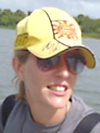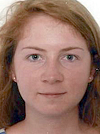MACROSENS
 |
Implementation of <i>Macrobrachium</i> spp. as a sentinel species for monitoring the quality of surface water in Guadeloupe and Martinique (French West Indies) |
|
Research
Context and Issues
Recent research projects have demonstrated the ability of the freshwater shrimp Macrobrachium spp. to bioaccumulate large amounts of the organochlorine compound chlordecone, formerly used as an insecticide to control the banana root borer Cosmopolites sordidus) in the French West Indies (Guadeloupe and Martinique). Macrobrachium spp. is also a relevant genus for measuring tissue-specific biochemical changes and investigating population dynamics in the field. Together, these characteristics are useful for linking exposure to effects in ecosystems contaminated by chlordecone and other chemicals. The recent Directive 2013/39/UE of the European Parliament, amending the Water Framework Directive (2000/60/EC) and the Directive on Environmental Quality Standards (Directive 2008/105/EC) requires the introduction of biota quality standards for 11 substances (cf. Annexe X of Directive 2013/39/UE), in addition to those already existing for mercury, hexachlorobenzène (HCB) and hexachlorobutadiène (HCBD). The application of European Directives 2013/39/UE in French overseas regions requires the identification of species in which internal levels of these priority substances can be determined. In such a context, Macrobrachium spp. has been identified as a candidate organism to do so.
Objectives
The general objective of the project is to use Macrobrachium spp. to link the pressures and impacts due to the presence of organic contaminants in rivers of Guadeloupe and Martinique. The species complex Macrobrachium spp. (i.e., M. faustinum, M. heterochirus, M. crenulatum, M. carcinus, M. acanthurus) is used as a biological sentinel to simultaneously monitor internal levels of contaminants and physiological and population effects. Monitoring is performed in rivers distributed in distinct areas of both islands in order to cover the geographical distribution of the different Macrobrachium species. Contaminants to be considered include:
Those identified as priority substances in Directive 2013/39/UE and pesticides released into the aquatic environment as the result of past and current agricultural practices.
Methodology
- Quantification of organic contaminants in both water and body parts of Macrobrachium spp. using standard appropriate analytical methods
- Measurement of enzyme activities as biomarkers of physiological changes (e.g., neurotoxicity, detoxification) in the shrimp.
- Measurement of hormone-related alterations (i.e., changes in 20-hydroxy-ecdysone and vitellogenin levels) .
- Assessment of genotoxic effects in both somatic and germinal cells.
- Assessment of changes in population dynamics.
- Identification of the origin of Macrobrachium spp. populations through genetic analysis and phylogeographic methods.
Results
This project should deliver the methodological basis for the use of Macrobrachium spp. as a sentinel species for monitoring the biota quality standard in rivers located in French overseas areas. It will also provide new knowledge about physiological and demographic consequences of pollutant exposure in aquatic invertebrates of primary interest in tropical aquatic environments. Finally, this project will contribute to a better understanding of Macrobrachium spp. population genetics and phylogeography.
People involved
 |
BESNARD Anne-Laure, Technician Phone : +33 2 23 48 54 43 Email : anne-laure.besnard(at)inrae.fr |
 |
CAUPOS Fanny, Ph.D. Student Phone : +33 6 96 50 47 15 Email : fanny.caupos@asconit.com |
 |
CHAPUT BARDY Audrey, Scientist Phone : +33 2 23 48 54 41 (extension 63 87) Email : audrey.cadou@inrae.fr |
 |
COUTELLEC Marie-Agnès, Scientist Phone : +33 2 23 48 52 48 Email : marie-agnes.coutellec@inrae.fr |
 |
LAGADIC Laurent, Scientist Phone : +33 2 23 48 52 37 Email : laurent.lagadic@inrae.fr |
 |
NEVEUX Marie-Sophie, Technician Phone : +33 2 23 48 56 69 Email : marie-sophie.neveux@inrae.fr |
 |
VASSAUX Danièle, Technician Phone : +33 2 23 48 56 69 Email : daniele.vassaux@inrae.fr |
Partners
Funding and Support
ONEMA The French National Agency for Water and Aquatic Environments
